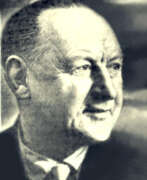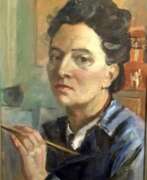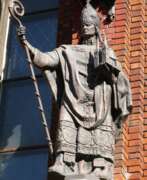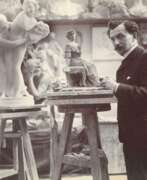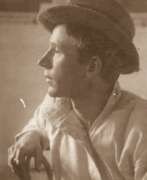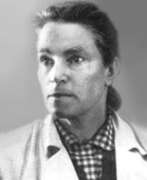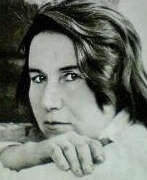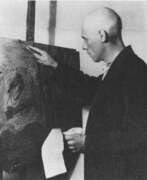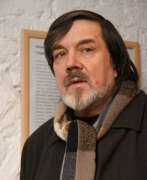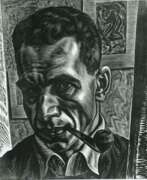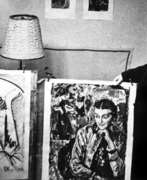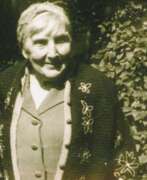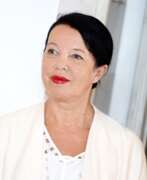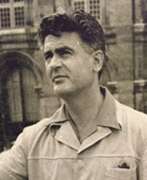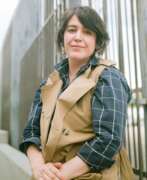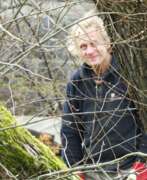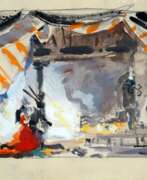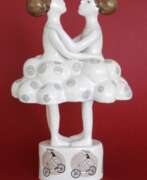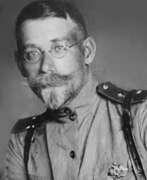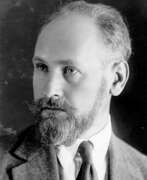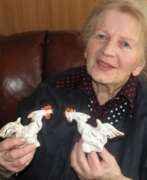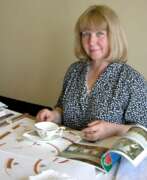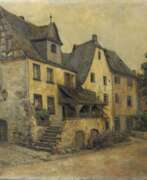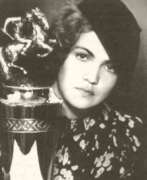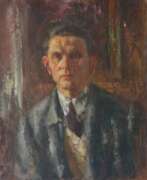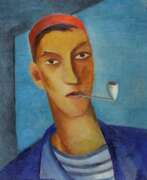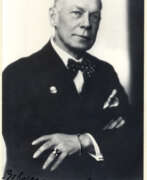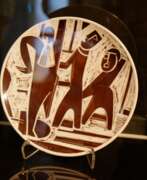Latvia
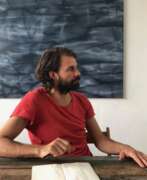

Janis Avotins is a Latvian artist, born in Riga in 1981. He was educated at the Latvian Academy of Art and the Royal College of Art in London. Avotins works in various media, including painting, drawing and sculpture, and his work is characterised by an experimental approach to form and technique. He has been recognised for his exhibitions in international galleries including Serpentin Galleries in London and the Venice Biennale.
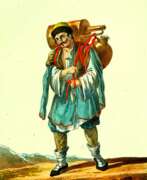

Karl Petrovich Beggrov (Russian: Карл Петрович Беггров) was a Russian artist known for his exceptional lithographs and watercolor paintings. Born in 1799, Beggrov studied at the St. Petersburg Academy of Arts under M.N. Vorobyov and later worked in his brother's lithographic workshop. His talent spanned various art forms, including portraits, landscapes, and cityscapes, which captured the essence of 19th-century St. Petersburg.
Beggrov's work is particularly celebrated for its detailed and vivid portrayals of St. Petersburg. His series "Views of St. Petersburg and Its Environs," created between 1821 and 1826, remains one of the most significant contributions to early Russian lithography. These works were a collaborative effort with other artists, yet Beggrov's distinctive style is evident in the 28 lithographs he produced for the series.
Several of Beggrov's artworks are housed in major museums, including the Metropolitan Museum of Art. Notable pieces like "Our Lady of Vladimir Church in St. Petersburg" and "View of the Arch of the General Staff Building Towards the Winter Palace" showcase his mastery of lithography and his ability to convey architectural grandeur with precision.
For collectors and art enthusiasts, staying updated on Karl Petrovich Beggrov's works is essential. Subscribe to our updates for notifications on new product sales and auction events related to Beggrov's art.
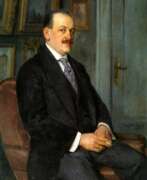

Nikolay Petrovich Bogdanov-Belsky (Russian: Николай Петрович Богданов-Бельский) was a renowned Russian artist, celebrated for his genre paintings depicting the education of peasant children, as well as portraits and impressionistic landscapes. Born in 1868 in Shitiki, Smolensk Governorate, Bogdanov-Belsky added "Belsky" to his surname from the district where he was born. His academic journey in art began at the Semyon Rachinsky fine art school, followed by studies at the Moscow School of Painting, Sculpture and Architecture, and later at the Imperial Academy of Arts in St. Petersburg.
Throughout his career, Bogdanov-Belsky was an active participant in Russian artistic circles, becoming a member of the Peredvizhniki from 1895 and the Arkhip Kuindzhi Society from 1909. His works often centered around the themes of rural education and childhood, capturing the subtle interplay of light and shadow and the innocence of his subjects. Notable works include "Mental Arithmetic, in the Rachinsky School" (1895) and "Sunday reading in a village school" (1895), which reflect his deep engagement with the theme of education.
After the Soviet Union came into power, the political climate and the disfavor towards realism compelled him to move to Riga, Latvia in 1921, where he continued his artistic endeavors until his death in Berlin in 1945 due to an Allied bombing during World War II.
For collectors and enthusiasts of Russian art, Bogdanov-Belsky's works offer a poignant glimpse into pre-Soviet Russian culture and education. His paintings are not only aesthetically pleasing but also historically significant, capturing the essence of a bygone era. To stay updated on sales and auction events featuring works by Nikolay Petrovich Bogdanov-Belsky, consider signing up for updates. This subscription will ensure you are informed about new opportunities to acquire pieces by this illustrious artist.
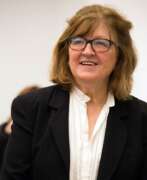

Vija Celmins is a Latvian-American artist. She is best known for her photorealistic paintings and drawings of natural and man-made objects.
Celmins and her family fled Latvia during World War II and eventually settled in the United States. She studied art at the John Herron School of Art in Indianapolis and later at the University of California, Los Angeles.
Celmins began her career as a painter in the 1960s, and by the 1970s she had developed her signature style of photorealism. She is known for her painstaking attention to detail, and her paintings and drawings often take months or even years to complete. Some of her most famous works include images of the night sky, oceans, and rocks.
Celmins has been the subject of numerous solo exhibitions in museums and galleries around the world, including a retrospective at the Centre Pompidou in Paris in 2006. Her work is held in the collections of many major museums, including the Metropolitan Museum of Art in New York, the Museum of Modern Art in New York, and the National Gallery of Art in Washington, D.C.


Jacques (Ya'akov) Chapiro was a painter of the School of Paris.
Chapiro's works can be found in museums in the United States (Chicago), Russia (Moscow) and France (Jeu de Paume, Paris). As to his artistic style, it seems that Chapiro was fond of experiments. His many paintings are much different from one another; some are classified as Cubistic in style, some as Impressionist and others as Fauvist. Throughout his artistic career, Chapiro kept sketching in his unique signature, with a light and talented hand. It is in his realistic sketching, which are somewhat casual, that one can be truly impressed by his talent.
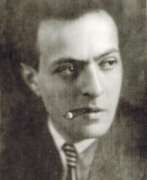

Ilya Grigorevich Chashnik (Russian: Илья Григорьевич Чашник) was a Russian Suprematist artist, known for his close association with Kazimir Malevich and as a pioneering member of the UNOVIS school. Born in 1902 in Lucyn, Russian Empire (now Ludza, Latvia), Chashnik's artistic journey began in Vitebsk, where he was deeply influenced by the avant-garde movements of the early 20th century. He studied at the Vitebsk Artistic-Practical Institute under Malevich and became one of his most faithful disciples, embracing Suprematism's focus on basic geometric forms and the use of a limited color palette.
Chashnik's work is characterized by his exploration of Suprematist principles across various forms of art, including painting, metalwork, and ceramics. His art is distinguished by a dynamic use of forms, often incorporating complex tonal relationships and achieving a sense of rhythm and symmetry. Notably, Chashnik applied these principles to the design of everyday objects, making significant contributions to porcelain design at the Lomonosov Porcelain Factory. His designs for the factory revealed his inventive approach, combining Suprematist aesthetics with practical applications.
Despite his untimely death in 1929 at the age of 27, Chashnik's legacy in the art world remains profound. His works are held in several prestigious collections, including the Thyssen-Bornemisza Museum in Madrid and the Museum of Modern Art (MoMA) in New York. These institutions recognize Chashnik not just for his artistic output but also for his significant role in the development of Suprematism and its application beyond traditional canvases.
For those interested in the intersection of avant-garde art and practical design, Ilya Chashnik's work offers a fascinating study. His ability to translate the visionary ideas of Suprematism into tangible objects marks him as a key figure in the movement's history. To stay updated on new insights and sales related to Ilya Grigorevich Chashnik's work, sign up for updates and don't miss out on the opportunity to explore the works of this groundbreaking artist.
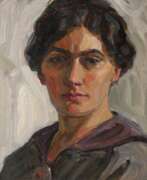

Selma des Coudres (Plawneek) a Latvian-born German painter, blended elements of Art Nouveau, Expressionism, and Japonism in her artworks. After studying under Elise Jung-Stilling, she became a teacher and continued her art education with Janis Rozentāls and Wilhelm Purvītis. Selma illustrated books and participated in exhibitions in Riga, Munich, and other locations. Following her marriage to Adolf des Coudres in 1921, she settled in Fürstenfeldbruck, where she co-founded the Kunstverein Fürstenfeldbruck. To sustain herself financially, she focused on portraits and floral still-lifes.
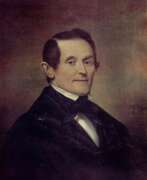

Johann Leberecht Eggink (Russian: Иван Егорович Эггинк) was a German-Baltic and Russian artist of the first half of the 19th century. He is known as a painter and teacher.
Johann Eggink lived and worked in the Russian Empire for some 40 years. He was mainly engaged in historical painting, creating paintings with subjects from a variety of eras, including ancient Rome and ancient Russia. The artist was also famous for his portraits and portrait miniatures. He received the title of Academician of the Imperial Academy of Arts in St. Petersburg.
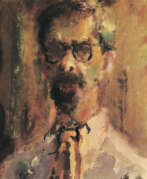

Arthur Vladimirovich Fonvizin (Russian: Артур Владимирович Фонвизин), a Soviet painter renowned for his mastery in watercolor, was born on January 11, 1883, into a forester's family. From a young age, following a transformative experience at a circus, Fonvizin developed a profound love for drawing. His journey into the art world began with his education at the Moscow School of Painting, where he rubbed shoulders with avant-garde artists and later furthered his studies in Munich among a vibrant community of Russian painters. Fonvizin's early work, influenced by symbolism and the lyrical primitive style, included notable pieces such as "The Bride" (1902) and "Leda" (1904).
Throughout his career, Fonvizin was an active participant in significant art movements and exhibitions, such as the Blue Rose, Jack of Diamonds, and the World of Art movement. His transition to watercolors marked a defining moment in his artistic journey, allowing him to capture the ephemeral beauty of landscapes, portraits, and scenes from pre-revolutionary life with a directness and vibrancy that became his hallmark.
Despite facing challenges, including criticism for formalism and being exiled due to his German heritage, Fonvizin's resilience and dedication to art remained unwavering. His works, celebrated for their lack of preparatory sketches and immediate application of paint, are held in high esteem and featured in prestigious collections like the Tretyakov Gallery and the Pushkin Museum. Among his famous works are "The Circus. Horsewoman" (1936) and portraits of ballerinas from the Bolshoi Theater, showcasing his lifelong fascination with the circus and theater.
For collectors and experts in art and antiques, Fonvizin's oeuvre offers a unique glimpse into the soul of early 20th-century Russian art, marked by its lyrical beauty and emotional depth. To stay updated on sales and auction events related to Arthur Vladimirovich Fonvizin's work, signing up for updates is recommended. This subscription ensures access to the latest information on the availability of his mesmerizing watercolor paintings.
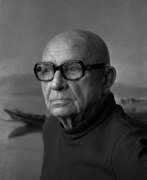

Eduards Kalniņš (Russian: Эдуард Фридрихович Калнынь), born on October 25, 1904, in Riga, Latvia, was a renowned Latvian painter and esteemed educator, notably remembered as the nation's most distinguished marine artist. His early artistic education was shaped under the tutelage of J. Moškevič in Tomsk during his family's refuge period, eventually culminating at the Art Academy of Latvia, where he honed his craft under Vilhelms Purvītis. Kalniņš's tenure at the Art Academy of Latvia as a professor from 1955, after serving as a docent from 1947, significantly influenced the post-war generation of Latvian painters, establishing him as a pivotal figure in Latvian art education.
His artistry was deeply interconnected with exploring the bonds between art and reality, dedicating a considerable part of his work to portraying the lives and environments of fishermen, which later became emblematic of the Latvian painting school. Kalniņš was celebrated for his emotional and profound engagement with reality, high painting culture, and spiritual vitality, often depicted through landscapes and still lifes.
Kalniņš's contributions were internationally acknowledged through exhibitions and awards. He was the first laureate of the prestigious Rome Prize in 1935, which facilitated his studies in Italy, profoundly influencing his artistic palette and style. His works were celebrated in personal exhibitions across Riga, Japan, and various European countries, consolidating his legacy within the global art community.
For art collectors and enthusiasts intrigued by Eduards Kalniņš's profound influence on Latvian maritime painting and his innovative contributions to art education, his works offer a deep dive into the soul of Latvian natural and cultural landscapes. His legacy, marked by vibrant portrayals and educational leadership, continues to inspire and resonate. To stay updated on sales and auction events related to Eduards Kalniņš's art, signing up for updates is highly recommended, ensuring enthusiasts are promptly informed about opportunities to engage with his timeless works.
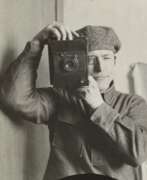

Gustav Gustavovich Klutsis (Russian: Густав Густавович Клуцис), a pioneering Latvian artist, played a significant role in the Constructivist avant-garde movement of the early 20th century. His work is celebrated for its innovative use of photomontage, which Klutsis developed alongside his wife, Valentina Kulagina. Klutsis's early career flourished with projects like the agitprop kiosks for the fifth anniversary of the Revolution, showcasing his talent for integrating various media such as "radio-orators," film screens, and newsprint displays. His commitment to the Constructivist ethos was evident through his dynamic compositions, which often featured distorted scales and perspectives, making his propaganda pieces for the Soviet regime perpetually modern.
Klutsis's art evolved under the shadow of Stalinist propaganda, with his later works reflecting the regime's increasing control over artistic expression. Despite this, he managed to innovate within the constraints, integrating large portraits of Stalin into his photomontages. However, this shift towards monumental propaganda also marked a departure from Constructivism's principles. Klutsis's dedication to the Soviet state did not shield him from its purges; he was arrested in 1938 and executed shortly thereafter, a tragic end for a loyal supporter of the Bolshevik regime.
His contributions to art and propaganda remain influential, with works housed in prestigious institutions like the Museum of Modern Art (MoMA) and the Latvian National Museum of Art. Klutsis's legacy as a key figure in Soviet art and his tragic fate reflect the complex relationship between artistic innovation and political ideology in the early Soviet Union.
For collectors and experts in art and antiques, Klutsis's work offers a fascinating insight into the power of visual communication and the turbulent history of Soviet art. To stay updated on new product sales and auction events related to Gustav Klutsis, signing up for updates is highly recommended. This subscription will ensure you're informed about the latest opportunities to engage with the enduring legacy of this revolutionary artist.


Ludolfs Liberts was a Latvian painter and stage designer who was chairman of the Sadarbs Society of Artists and was a member of the Riga group of artists. The most important part of his work was scenography. Liberts also painted Latvian landscapes, but his views of Paris and depictions of Venetian palaces, squares and canals became popular. He also created many portraits.
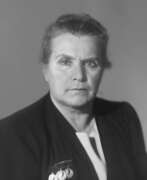

Vera Ignatyevna Mukhina (Russian: Ве́ра Игна́тьевна Му́хина) was a renowned Soviet sculptor and artist, celebrated for her significant contributions to Soviet art and sculpture. Born into a wealthy merchant family in Riga, Mukhina's journey into the world of art took her through the studios of notable artists in Russia and Europe, including the Académie de la Grande Chaumière in Paris under Antoine Bourdelle. Her work is deeply imbued with a sense of national pride and a commitment to the socialist cause, reflecting the tumultuous times she lived through, including both World Wars and the shifting political landscape of the Soviet Union.
Mukhina's most celebrated piece, "Worker and Kolkhoz Woman," a towering sculpture made of stainless steel, was originally created for the 1937 World's Fair in Paris. This sculpture, standing as a symbol of Soviet might and unity, showcases Mukhina's mastery in welding and her innovative approach to monumental art. The piece was acclaimed internationally and continues to be a significant symbol of Soviet and Russian culture.
Throughout her career, Mukhina experimented with a variety of materials and techniques, including glass, earning her numerous awards, such as the Stalin Prize, which she received five times, and the title of People's Artist of the USSR. Her commitment to art went beyond her own creations; she was a passionate educator and theorist, advocating for the enrichment of Soviet artistic vocabulary and experimenting with new materials and forms.
Mukhina's legacy extends beyond her sculptures to her contributions to the art world through her theoretical writings, her influence on public and architectural sculpture, and her experimentation with art glass, transforming ordinary objects into decorative art pieces. Her works are preserved in museums and public spaces, continuing to inspire and evoke admiration.
For collectors and experts in art and antiques, Mukhina's works represent a poignant narrative of 20th-century Soviet art, characterized by its boldness, innovation, and ideological commitment. Her life's work offers a window into the complexities of Soviet art, navigating the realms of personal expression and state expectations.
For those interested in exploring Vera Ignatyevna Mukhina's significant contributions to art and sculpture, consider signing up for updates on new product sales and auction events related to her work. This subscription offers a unique opportunity to engage with the history and legacy of one of the 20th century's most influential artists.
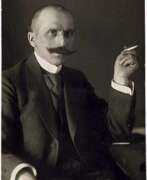

Vilhelms Kārlis Purvītis was a Latvian landscape painter and educator, celebrated for his profound influence on Latvian art and culture. Born in 1872 in the Kreis Riga area of the Governorate of Livonia, Purvītis is renowned for his mastery in capturing the neo-romantic atmosphere of Latvian nature through his paintings. He studied at the Imperial Academy of Arts in Saint Petersburg under Arkhip Kuindzhi, graduating with the Grand Gold Medal in 1897. His works, such as "Winter" (1910) and "Spring Waters (Maestoso)" (1911), showcase his evolution from Realism to Impressionism, influenced by European masters and movements like Art Nouveau.
Purvītis's contribution to Latvian art extends beyond his paintings. He founded the Latvian Academy of Art and served as its first rector from 1919 to 1934, shaping a generation of Latvian artists. His leadership roles at the Art Academy of Latvia and the Latvian National Museum of Art were pivotal in promoting Latvian art internationally, especially during the Republic of Latvia period. Despite personal losses, including the destruction of his house and many works during WWII, Purvītis's legacy endures through his influential teaching and the Purvītis Prize, established to recognize contemporary achievements in visual arts in Latvia.
For collectors and experts in art and antiques, Vilhelms Kārlis Purvītis's work represents not only a high point in Latvian landscape painting but also an embodiment of the country's rich cultural heritage. To stay updated on new discoveries, sales, and auction events related to Purvītis's work, signing up for updates is highly recommended. This ensures that enthusiasts and collectors alike are always informed about opportunities to engage with the legacy of this remarkable Latvian artist.


Mark Rothko, born Markus Yakovlevich Rothkowitz (Russian: Ма́ркус Я́ковлевич Ротко́вич) in what is now Daugavpils, Latvia, was a towering figure in the world of modern art, celebrated for his profound contributions to abstract expressionism. This American artist of Russian Jewish descent was known for his pioneering color field paintings, which are distinguished by their vibrant colors and emotional depth. Rothko's art transcends mere visual appeal, aiming to evoke deep emotional responses from viewers. His works are characterized by their simplicity, featuring soft, rectangular forms floating against a monochrome background. This unique style was not just about aesthetics; Rothko intended his paintings to be immersive experiences, reflecting his interest in human emotions and the existential conditions of life.
Rothko's journey from his birth in 1903 in the Russian Empire to becoming an iconic figure in American art is a testament to his enduring legacy. Despite facing challenges, including the early loss of his father and the struggle of immigrating to the United States, Rothko's passion for art and social issues saw him through. His early work was influenced by mythology and classical subjects, yet he evolved towards abstraction, insisting that his art was about expressing basic human emotions such as tragedy, ecstasy, and doom.
Significant works by Rothko include the Seagram Murals, initially commissioned for the Four Seasons Restaurant in New York but later donated to institutions like the Tate Modern, reflecting Rothko's disdain for the commercialization of art. The Rothko Chapel in Houston stands as a testament to his vision of art serving as a space for reflection and meditation.
Despite his tragic suicide in 1970, Rothko's influence remains undiminished. His paintings continue to command high prices at auctions, underscoring his lasting impact on the art world. For collectors and art and antiques experts, Rothko's work represents not only a high point in 20th-century art but also an investment in the transcendent power of color and form to evoke the deepest aspects of human experience.
For those interested in the transformative power of art, signing up for updates on new sales and auction events related to Mark Rothko can provide an opportunity to engage more deeply with his legacy. This is not just about acquiring art; it is about embracing the profound emotional and existential explorations that Rothko embarked upon through his work.


Alexander Ivanovich Sauerweid (Russian: Александр Иванович Зауервейд) was a Baltic German painter born on February 19, 1783, in the Duchy of Courland and Semigallia. He is best known for his detailed battle scenes and military portraits, which earned him significant acclaim in the 19th century. His early education in the arts took place at the Dresden Academy of Fine Arts, where he developed a strong foundation in painting.
Sauerweid's talent for depicting military subjects brought him to the attention of prominent figures of his time, including Napoleon and Tsar Alexander I of Russia. Invited to Saint Petersburg in 1814, Sauerweid became the official painter of the Russian General Staff and later a professor at the St. Petersburg Imperial Academy of Arts. His role involved teaching battle painting and producing works that depicted various military uniforms and scenes, a specialty that set him apart from his contemporaries.
Among his notable works are "The Battle of Leipzig" and "The Siege of Varna," which showcase his ability to capture the dynamism and drama of military engagements. Many of Sauerweid's paintings are housed in Russian Imperial Palaces, reflecting their historical and artistic value.
For collectors and enthusiasts, keeping abreast of Alexander Ivanovich Sauerweid's works is essential. Subscribe to our updates to be the first to know about new product sales and auction events related to this distinguished artist. Sign up now!
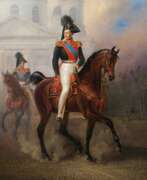

Alexander Schwabe (Russian: Александр Петрович Швабе) was a Russian painter known for his detailed and vivid hunting scenes and animal portraits. Born in 1824, Schwabe became a prominent artist of his time, specializing in depicting animals in their natural settings. His works often featured horses, dogs, and scenes of hunts, reflecting his deep passion for nature and wildlife.
Schwabe's career began with commissions from the Russian Imperial family, which significantly boosted his reputation. He painted numerous portraits of prized horses and hunting dogs for Emperor Nicholas I and other members of the aristocracy. His notable works include "Horses with a Shepherd and a Dog" (1850), "Deer Hunt in the Vicinity of Gatchina" (1860), and "Wolves Attacking a Herd of Horses" (1863). These pieces showcased his ability to capture the dynamic movement and energy of animals in action.
In addition to his paintings, Schwabe was recognized for his academic contributions. In 1861, he was appointed as a professor at the Imperial Academy of Arts, reflecting his influence and expertise in animal painting. His works were frequently exhibited in academic shows between 1844 and 1863, and many of his paintings are now housed in prestigious collections, such as the Tretyakov Gallery in Moscow and the Gatchina Palace.
For collectors and art enthusiasts, Alexander Schwabe's paintings offer a captivating glimpse into 19th-century Russian aristocratic life and their passion for hunting and nature. To stay updated on new sales and auction events related to Alexander Schwabe's works, sign up for our updates.
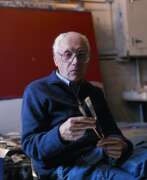

Raimonds Staprans is a Latvian-born American artist and playwright living in San Francisco, California.
He emigrated from Latvia to the United States in the mid-1940s, and studied art at the University of Washington and the University of California, Berkeley.
Staprans is best known for his depictions of ordinary everyday objects, such as paint cans, chairs and cabinets, which are painted in bright colors and set against a monochromatic background. His work balances on the edge between realism and abstraction. Staprans has also gained recognition as a playwright, having written several plays on the theme of "the Soviet occupation of Latvia.


Leo Svemps (Russian: Лео Симанович Свемпс) was a Latvian painter, celebrated for his mastery in the genre of still life, and a prominent figure in Latvian modern art. Born in 1897, Svemps made significant contributions to Latvian painting with his vibrant, color-rich, and dynamic brushwork, particularly noted for his still lifes that showcase a natural gift for improvisation and a fresh perception of color. As a member of the Riga artist group, he initially aligned with moderate modernism, later focusing on still lifes and landscapes, especially during the Soviet era.
Svemps' education and career were marked by his versatility; after studying law, he ventured deeply into painting, engaging in the Riga art scene and significantly influencing the development of still life painting in Latvia. His works, characterized by their luminous coloration and dynamic composition, often reflect influences from modern French painting, as well as Latvian nature and urban landscapes. Svemps also played a crucial role as an educator, serving as a professor and later as the rector of the Latvian Academy of Arts, thus shaping future generations of Latvian artists.
For collectors and art enthusiasts, Svemps' works are not only pivotal in understanding Latvian modern art but also represent the innovative spirit of 20th-century painting. His pieces, often featured in key galleries and museums, highlight the evolution of his style from early modernist influences to his renowned still lifes, showcasing his profound engagement with color, form, and texture.
To stay updated on exhibitions and auction events featuring Leo Svemps' remarkable works, signing up for updates is highly recommended. This will ensure you're informed about new opportunities to appreciate or acquire pieces by this significant Latvian artist, enhancing your collection with vibrant, historically meaningful art.


Francisks Ignatievich Varslavāns was a Latvian and Soviet painter. From 1944 he was a member of the Union of Artists of the USSR
The main theme of Francisks Varslavāns' paintings is landscapes and pictures of Latgalian everyday life. The influence of French modernists is noticeable in his work, and the 1920s - 1930s are considered to be the most valuable time in his work. In the first period he gravitated towards expressionism, then his works acquired a social character.


Indulis Zariņš (Russian: Индулис Августович Зариньш) was a Latvian painter and educator, renowned for his mastery in tonal painting and as a significant figure in figurative painting. Born in Riga in 1929, Zariņš' art was profoundly influenced by historical and social themes, reflecting his deep engagement with the Latvian and Soviet cultural milieu. His education and early career were marked by challenges, including deportation with his family during World War II, but he emerged as a leading artist, completing his education at the Latvian Academy of Art under Eduards Kalniņš in 1958.
Zariņš was recognized for his contributions to art with several awards, including the Grekov Prize in 1968 and the title of People's Artist of the USSR in 1986. His political activism during the Latvian Awakening period is notable, as he transitioned from a critic of mass actions to a representative of the Latvian Popular Front, reflecting his complex relationship with the era's political dynamics.
His works, particularly those focusing on the Latvian Red Riflemen, combine Latvian national history with Soviet ideological demands, offering a nuanced exploration of identity and memory. Zariņš' ability to navigate these themes while drawing inspiration from Western European tonal painting traditions, like those of Diego Velázquez and Johannes Vermeer, highlights his skill in blending historical narratives with artistic innovation.
For collectors and experts in art and antiques, Zariņš' legacy is a testament to the rich cultural history of Latvia and the broader Soviet experience. His works not only adorn museums but also continue to influence contemporary understandings of Latvian art and history.
For updates related to Indulis Zariņš, including sales and auction events of his works, sign up for our newsletter. This subscription is your gateway to the latest in the world of art and antiques, connecting you directly to the legacy of Zariņš and beyond.
